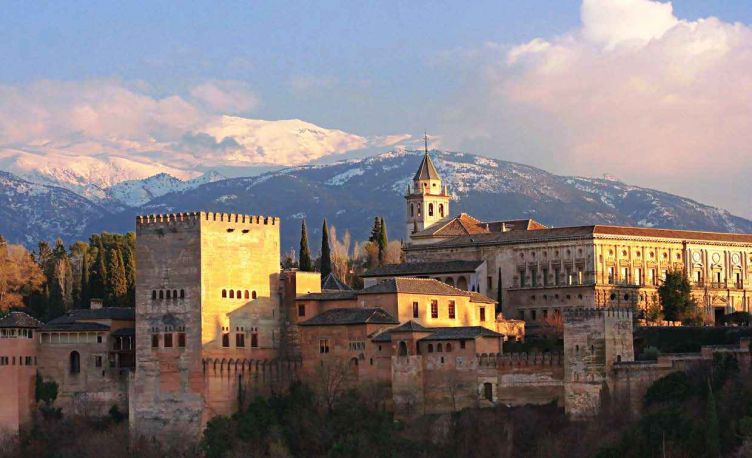Description
Granada is music and poetry, monuments which are pure art, and ancient culture. This province reaches towards the skies from the craggy summits of the Sierra Nevada mountains; cities with breathtaking architecture which reside serenely in the Altiplano region; white villages scattered across hills and valleys which slope down to the cliffs and beaches of the Costa Tropical. The province of Granada, tourist destination par excellence, offers travellers the chance to ski in the Sierra Nevada mountains, discover hidden villages in the Alpujarra region, explore the last frontier of the Al-Andalus empire in eastern Granada or stay in caves and experience a troglodyte’s lifestyle.
A land of mild warm summers and winters which are ideal for snow sports.
Location
On the banks of the Mediterranean Sea and in the heart of the Penibética mountain range. The capital is the city of Granada.
It borders the provinces of Málaga and Cordoba in the west, Jaén in the north, Almería in the east and it is open to the Mediterranean in the south.
History
The whole province is full of incentives for those who love architecture and culture. The district of Santa Fe was where the discovery of America was planned by Christopher Columbus, and Fuente Vaqueros is the birthplace of Federico García Lorca, one of the most important poets and playwrights to grace Spanish literature.
The remains of a hominid dating between one and two million years old were discovered in the Altiplano region of Granada. The Bastetani, an Iberian people, bequeathed to posterity a relic of great historic and cultural value: the Lady of Baza.
Some coins struck by the Turduli people towards the 5th century bear witness to the origin of the capital of this lovely province. In the 8th century, the Berbers conquered these lands which reached their apogee with the Nasrids, who brought an economic, social, artistic and cultural development whose influence can still be seen today.
Landscape
The province of Granada is characterised by a descending series of raised plains which start at the high summits and go right down to the shores of the Mediterranean Sea. These plains and the height of the terrain mean that the climate in winter is extremely cold. This greatly affects the vegetation, agriculture, cattle farming and game animals.
Three clearly distinct zones can be seen in Granada: the coast, the river plain in Granada, and themountain area. Each one has its own climate, geography, history and location which set it apart from the others.
Gastronomy
This has a marked Arab influence and is based on excellent ingredients. It features traditional dishes such as tender broad beans with ham, cardoons, the typical remojón (salad with cod and orange) and gazpacho. All accompanied by the delicious bread from Alfacar.
Six products have been recognised with the official Designation of Origin or Quality: olive oils from los Montes and the west, the green asparagus from Huétor Tájar, honey, cured ham from Trevélez and the custard apple from the Costa Tropical.
In Riofrío, they make the only quality Beluga caviar in Spain, and on the Costa Tropical you are guaranteed good fish and shellfish.

